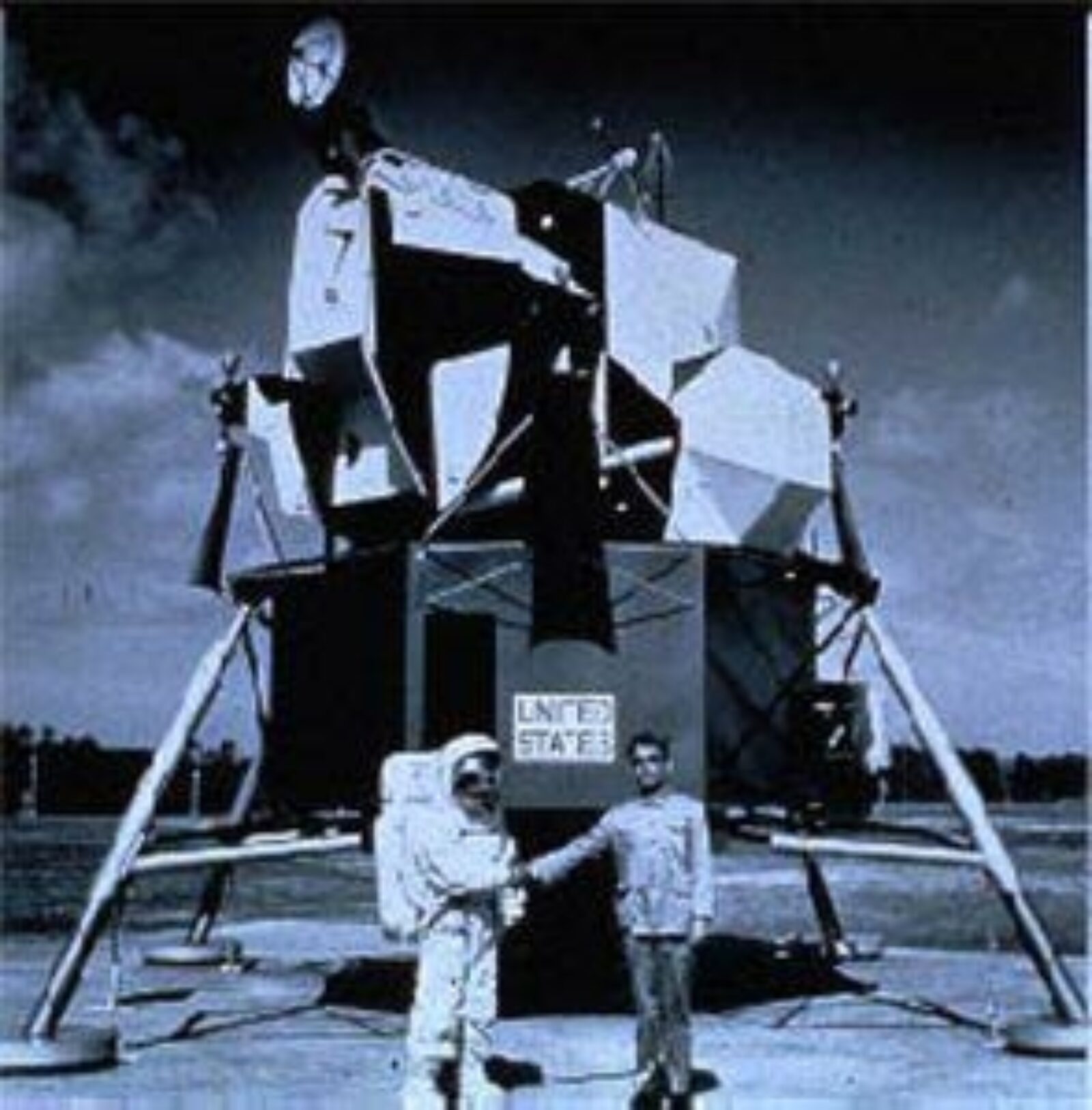
















featured gallery for June 2008
Alien Architecture
Bringing together images of works by five artists represented in the Visual AIDS slide library (David Abbott, Barton Lidice Benes, Robert Blanchon, Scott Burton and Tseng Kwong Chi), this exhibition sets out to explore the ways in which a sense of alienation can relate to objects and objecthood.
In his photographic series East Meets West, Tseng Kwong Chi photographs himself in front of tourist attractions located everywhere from the United States to Japan, Europe and South America. In these photographs, Tseng, wearing a Mao uniform -- the sartorial symbol of Communist China -- and dark sunglasses, plays up the stereotype of a stoic Chinese tourist, physically rigid and emotionless. In Monument Valley, Arizona (1987) Tseng stands to one side, staring up at a monumental rock formation in the distance. His stiff posture works its way into the landscape, seeming to belong as an object, yet as a "foreign" observer he stands apart, comically unmoved by the landscape. In New York, NY (1979) Tseng stands at the base of the World Financial Center. Taken from a low angle Tseng posture mimics the vertical thrust of the twin towers drawing a parallel between their facade and his own cold, dispassionate exterior, an equation of man with object, as a totally objectified other.
Like Tseng, Robert Blanchon plays with cultural signifiers in a way that mixes humor and biting critique. For instance, in You Belong on an Island (1986) Blanchon presents a grid of images that seem to have been lifted from a Sears Roebuck catalog or Time magazine circa 1950: laundry drying on a clothesline, the collar of a plaid shirt, kids peering longingly at a cake, the edge of a couch, a half-eaten plate of food, etc. Together these banal images paint a picture of ideal family life. The title, however, suggests exclusivity and calls for separation and isolation -- the American ideal is for some, not all. This sense of different worlds for different people is further explored in Cruising New York (1993), in which Blanchon placed an ad in a local newspaper offering "a comprehensive guide to the best sex arenas in Manhattan's public domain." From the men's bathroom in Grand Central Station to the Rambles in Central Park, Blanchon exposes the places where gay men meet to have sex in public. These inter-connected sub-cultural sites reveal a gay mapping of the city, and prove the existence of worlds within worlds.
David Abbott paints from photographs of family and friends, rendering figures in loose expressive brushwork that gives life to the painted surface yet dissolves identifying features into caricature. For instance, in The Visit (1992) a man and woman are positioned in front of an emerald green wall. The woman stands with both hands behind her back and stares directly at the viewer. To her right sits a man with his back towards us watching television. His face is hidden and hers is an emotional blank, leaving their identities and their relationship unclear. Meanwhile in Paris Has Burned (1995) two drag queens stand in front of a mirror getting ready for a show. The face of the one closest to the viewer appears to be a mask with darkness around its edge and pitch black holes in place of the eyes.
Barton Lidice Benes is an obsessive collector, collecting objects that belonged to or are otherwise connected to someone famous. A typical work is Repository (1997), in which the artist displays a seemingly random selection of objects, from Madonna's red panties bundled and pasted to a small square of paper, to a twig, which Lidice claims came "from a broom that swept the room that Mao Tse Tung used as a student at Hunan University from 1917-1919." It's hard to tell if these claims are true. They seem as fictive and transparent as Tseng's costume and alter ego, but in the end, the claim is what is most interesting. The claim that these objects belonged to someone in the popular imagination, gives them the spiritual potency of relics. And because the inanity of some of the claims, i.e. Larry Hagman's Gallstones (1993), pushes them to the edge of believability, one can also find a space to critically reflect on the objectification of the body in popular culture.
Scott Burton makes work that is part furniture and part sculpture. Contoured and scaled to the human body, these pieces sometimes seem to stand in for it. For instance, Rock Chair #14 (1989) is made of granite and designed to support a reclining body with knees slightly bent and raised, and because it is made to fit a human body one is hard-pressed not to see a human body in the index. These sculptures are post-minimal yet owe much to minimalism from which they inherit an objectness that is often described as figurative. For instance, Two Part Chair (1986) is made of two interlocking pieces of granite in such a way that one sits partially atop another, as if one figure is mounting another from behind. But the life-like characteristics of the sculptures are also complicated by their objectness, as the rigid formality of Burton's sculpture resist attempts to fully humanize them.
